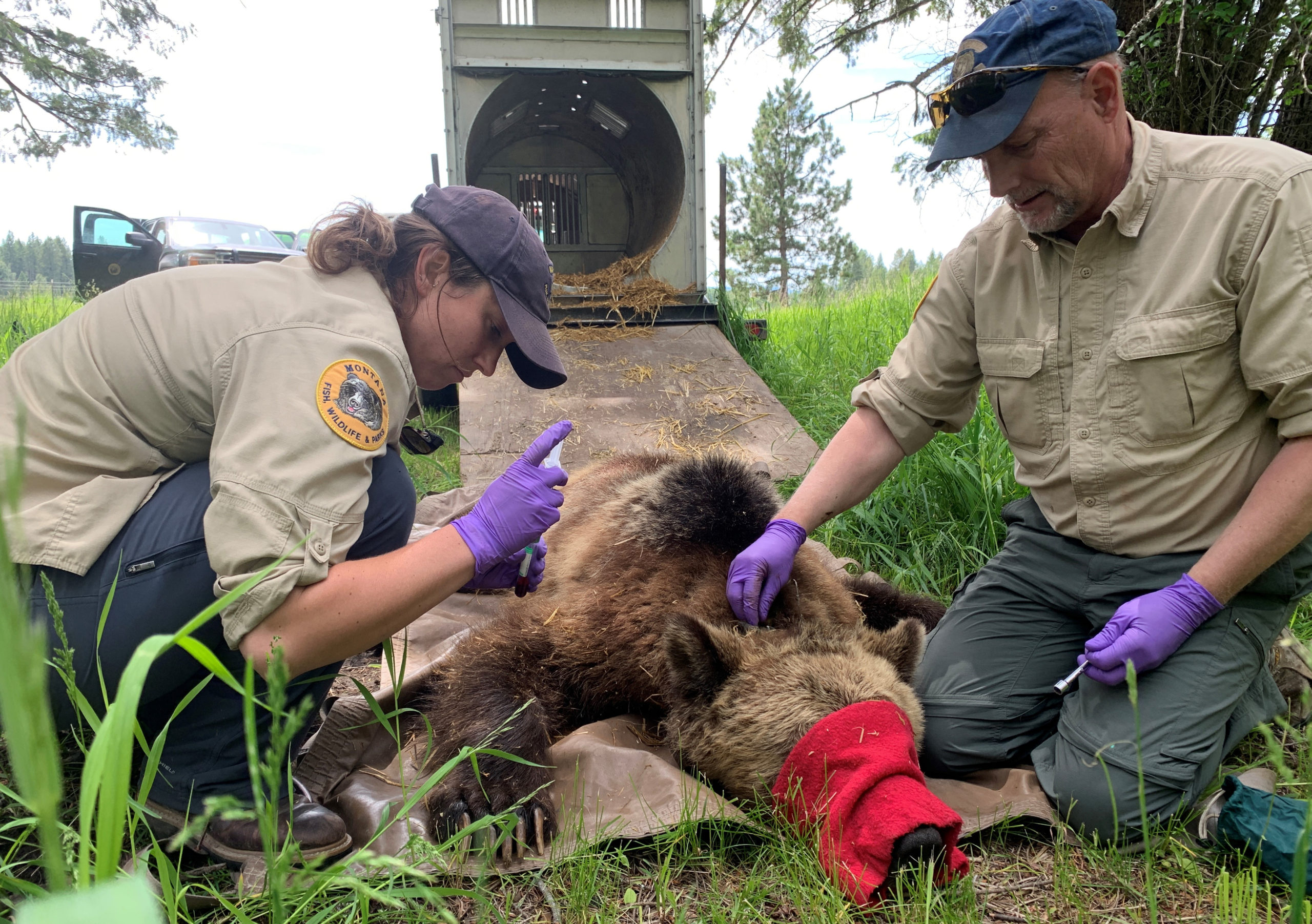The U.S. Fish and Wildlife Service Grizzly Bear Recovery Program is an excellent source for general information about grizzly bears in the lower-48 states, and for information on scientific research and monitoring efforts associated with each of the ecosystems.
- U.S. Fish and Wildlife Service – Species History, Diet, and Habitat
- U.S. Fish and Wildlife Service – Species Status Assessment (The latest scientific information for all ecosystems summarized in a comprehensive biological report released in January 2021).
- U.S. Fish and Wildlife Service – Grizzly Bear Recovery Program.

Through the Office of the Grizzly Bear Recovery Coordinator, U.S. Fish and Wildlife Service personnel have monitored the Cabinet-Yaak and Selkirk Ecosystem grizzly bear populations since the late 1970s. A formal monitoring program started in 1983. Detailed information on the monitoring program, including annual reports, are available here:
- Cabinet-Yaak and Selkirk Ecosystem – Grizzly Bear Recovery Program
For the Northern Continental Divide Ecosystem, Montana Fish, Wildlife & Parks, in cooperation with other state and federal agencies, initiated a trend monitoring program in 2004. The program is focused on telemetry monitoring of females grizzly bears to annually estimate vital population parameters that influence population trends of grizzly bears, such as survival and reproductive rates. The monitoring and research program also provides data to assess the distribution of bears within and adjacent to the recovery zone, and collect information on other pertinent aspects of grizzly bear ecology.
- Northern Continental Divide Ecosystem – Grizzly Bear Population Monitoring Team Reports.
For the Greater Yellowstone Ecosystem, the Interagency Grizzly Bear Study Team (IGBST) is an interdisciplinary group of scientists and biologists responsible for long-term research and monitoring of the population. The IGBST was formed in 1973 by the U.S. Department of the Interior (DOI). IGBST members are representatives from the U.S. Geological Survey, National Park Service, U.S. Fish and Wildlife Service, U.S. Forest Service, the Eastern Shoshone and Northern Arapaho Tribal Fish and Game Department, and the States of Idaho, Montana, and Wyoming. This interagency approach ensures consistency in data collection and allows for combining limited resources to address information needs throughout the Greater Yellowstone Ecosystem. Detailed monitoring information, including annual reports, journal articles, and research data are available on the IGBST website:
- Greater Yellowstone Ecosystem – Interagency Grizzly Bear Study Team Annual Reports (1987-present).
- Greater Yellowstone Ecosystem – Interagency Grizzly Bear Study Team.
- Greater Yellowstone Ecosystem – Yellowstone Grizzly Bears: Ecology and Conservation of an Icon of Wildness (nps.gov) (a free PDF version of a book summarizing grizzly bear science and conservation of the Yellowstone grizzly bear population is available from the National Park Service).
The International Association for Bear Research and Management (IBA) is a good source for scientific information on all 8 bear species in the world. The IBA is a professional organization of biologists, wildlife managers and others dedicated to advancing scientific understanding and global conservation of the world’s bear species. The organization has members from over 60 countries, sponsors international conferences, and publishes the peer-reviewed journal Ursus.

